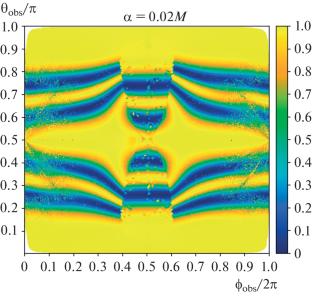黑洞附近的中微子自旋振荡
IF 0.4
4区 物理与天体物理
Q4 PHYSICS, NUCLEAR
引用次数: 0
摘要
在这项工作中,我们研究了中微子自旋振荡在它们被厚厚的磁化吸积盘包围的旋转克尔黑洞引力散射的情况下。我们只考虑圆盘内部的环面磁场。微中子自旋进动是由微中子磁矩与盘内磁场的相互作用引起的。我们对观测到的中微子通量的自旋振荡的处理,是基于使用高性能并行计算对大量入射测试中微子传播的数值模拟。我们简要地讨论了我们的结果及其在天体物理中微子观测中的应用。本文章由计算机程序翻译,如有差异,请以英文原文为准。

Neutrino Spin Oscillations near a Black Hole
In this work, we study neutrino spin oscillations in the case when they are gravitationally scattered off a rotating Kerr black hole surrounded by a thick magnetized accretion disk. We consider only toroidal magnetic field inside the disk. Neutrino spin precession is caused by the interaction of the neutrino magnetic moment with the magnetic field in the disk. Our treatment of spin oscillations of the observed neutrino fluxes, is based on numerical simulations of the propagation of a large number of incoming test neutrinos using High Performance Parallel Computing. We briefly discuss our results and their applications in the observations of astrophysical neutrinos.
求助全文
通过发布文献求助,成功后即可免费获取论文全文。
去求助
来源期刊

Physics of Atomic Nuclei
物理-物理:核物理
CiteScore
0.60
自引率
25.00%
发文量
56
审稿时长
3-6 weeks
期刊介绍:
Physics of Atomic Nuclei is a journal that covers experimental and theoretical studies of nuclear physics: nuclear structure, spectra, and properties; radiation, fission, and nuclear reactions induced by photons, leptons, hadrons, and nuclei; fundamental interactions and symmetries; hadrons (with light, strange, charm, and bottom quarks); particle collisions at high and superhigh energies; gauge and unified quantum field theories, quark models, supersymmetry and supergravity, astrophysics and cosmology.
 求助内容:
求助内容: 应助结果提醒方式:
应助结果提醒方式:


